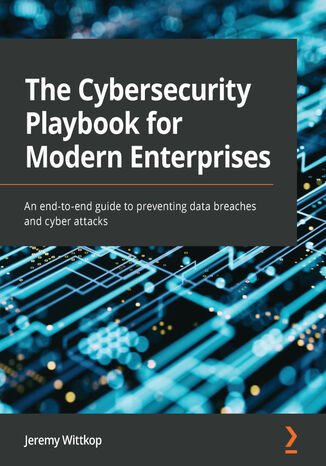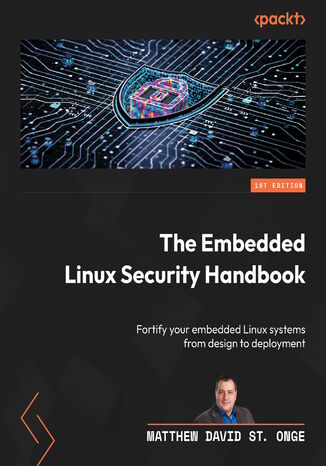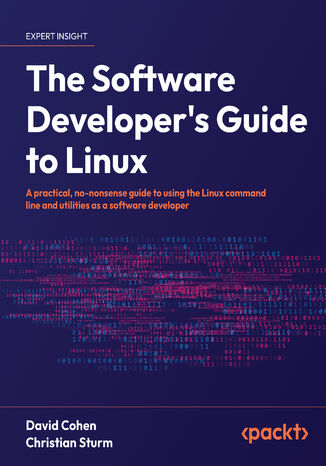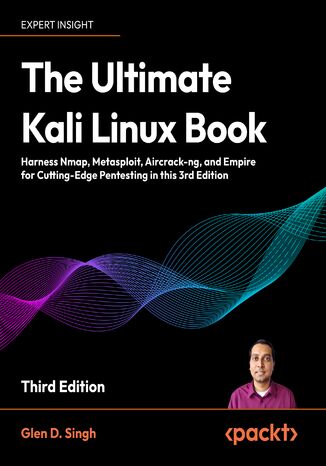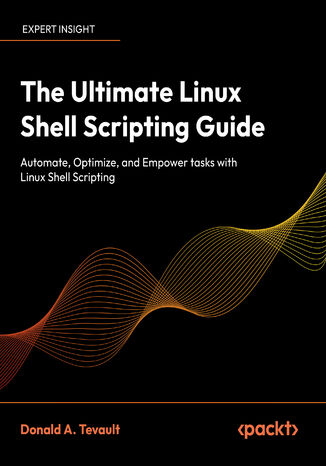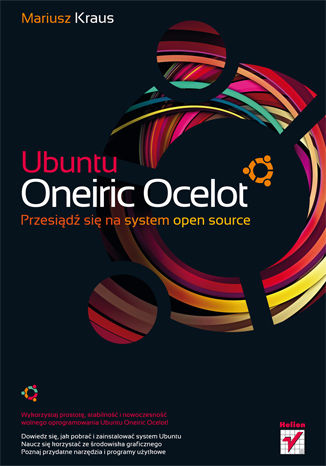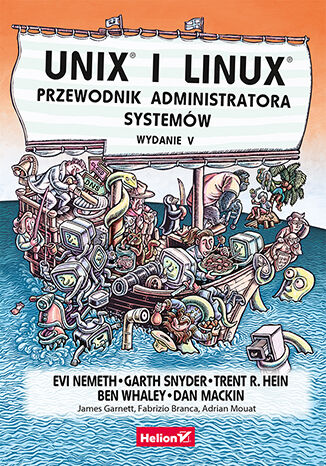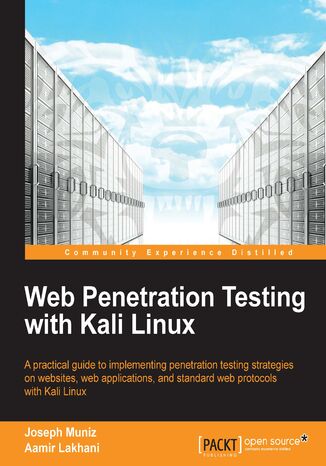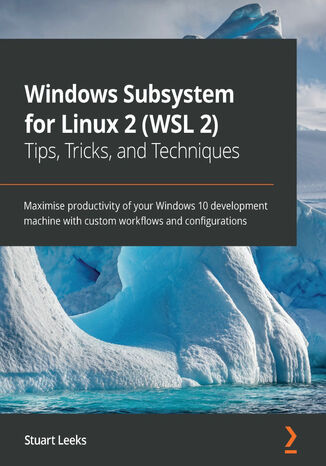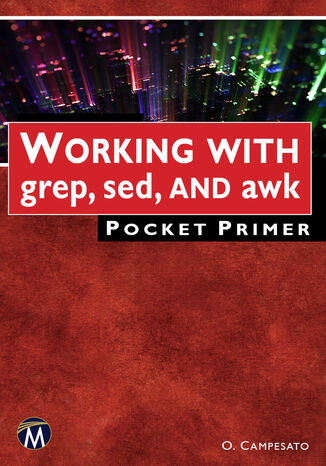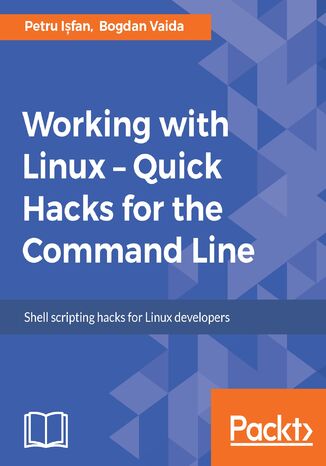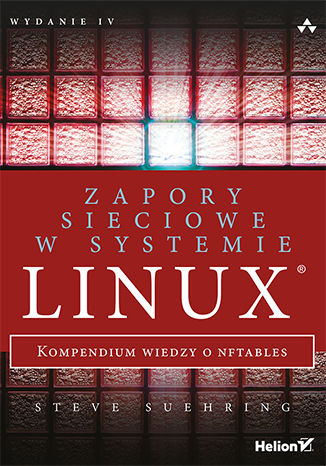Категорії
Електронні книги
-
Бізнес та економіка
- Біткойн
- Ділова жінка
- Коучинг
- Контроль
- Електронний бізнес
- Економіка
- Фінанси
- Фондова біржа та інвестиції
- Особисті компетенції
- Комп'ютер в офісі
- Комунікація та переговори
- Малий бізнес
- Маркетинг
- Мотивація
- Мультимедійне навчання
- Нерухомість
- Переконання та НЛП
- Податки
- Соціальна політика
- Порадники
- Презентації
- Лідерство
- Зв'язки з громадськістю
- Звіти, аналізи
- Секрет
- Соціальні засоби комунікації
- Продаж
- Стартап
- Ваша кар'єра
- Управління
- Управління проектами
- Людські ресурси (HR)
-
Для дітей
-
Для молоді
-
Освіта
-
Енциклопедії, словники
-
Електронна преса
- Architektura i wnętrza
- Безпека життєдіяльності
- Biznes i Ekonomia
- Будинок та сад
- Електронний бізнес
- Ekonomia i finanse
- Езотерика
- Фінанси
- Особисті фінанси
- Бізнес
- Фотографія
- Інформатика
- Відділ кадрів та оплата праці
- Для жінок
- Комп'ютери, Excel
- Бухгалтерія
- Культура та література
- Наукові та академічні
- Охорона навколишнього середовища
- Впливові
- Освіта
- Податки
- Подорожі
- Психологія
- Релігія
- Сільське господарство
- Ринок книг і преси
- Транспорт та спедиція
- Здоров'я та краса
-
Історія
-
Інформатика
- Офісні застосунки
- Бази даних
- Біоінформатика
- Бізнес ІТ
- CAD/CAM
- Digital Lifestyle
- DTP
- Електроніка
- Цифрова фотографія
- Комп'ютерна графіка
- Ігри
- Хакування
- Hardware
- IT w ekonomii
- Наукові пакети
- Шкільні підручники
- Основи комп'ютера
- Програмування
- Мобільне програмування
- Інтернет-сервери
- Комп'ютерні мережі
- Стартап
- Операційні системи
- Штучний інтелект
- Технологія для дітей
- Вебмайстерність
-
Інше
-
Іноземні мови
-
Культура та мистецтво
-
Шкільні читанки
-
Література
- Антології
- Балада
- Біографії та автобіографії
- Для дорослих
- Драми
- Журнали, щоденники, листи
- Епос, епопея
- Нарис
- Наукова фантастика та фантастика
- Фельєтони
- Художня література
- Гумор, сатира
- Інше
- Класичний
- Кримінальний роман
- Нехудожня література
- Художня література
- Mity i legendy
- Лауреати Нобелівської премії
- Новели
- Побутовий роман
- Okultyzm i magia
- Оповідання
- Спогади
- Подорожі
- Оповідна поезія
- Поезія
- Політика
- Науково-популярна
- Роман
- Історичний роман
- Проза
- Пригодницька
- Журналістика
- Роман-репортаж
- Romans i literatura obyczajowa
- Сенсація
- Трилер, жах
- Інтерв'ю та спогади
-
Природничі науки
-
Соціальні науки
-
Шкільні підручники
-
Науково-популярна та академічна
- Археологія
- Bibliotekoznawstwo
- Кінознавство / Теорія кіно
- Філологія
- Польська філологія
- Філософія
- Finanse i bankowość
- Географія
- Економіка
- Торгівля. Світова економіка
- Історія та археологія
- Історія мистецтва і архітектури
- Культурологія
- Мовознавство
- літературні студії
- Логістика
- Математика
- Ліки
- Гуманітарні науки
- Педагогіка
- Навчальні засоби
- Науково-популярна
- Інше
- Психологія
- Соціологія
- Театральні студії
- Богослов’я
- Економічні теорії та науки
- Transport i spedycja
- Фізичне виховання
- Zarządzanie i marketing
-
Порадники
-
Ігрові посібники
-
Професійні та спеціальні порадники
-
Юридична
- Безпека життєдіяльності
- Історія
- Дорожній кодекс. Водійські права
- Юридичні науки
- Охорона здоров'я
- Загальне, компендіум
- Академічні підручники
- Інше
- Закон про будівництво і житло
- Цивільне право
- Фінансове право
- Господарське право
- Господарське та комерційне право
- Кримінальний закон
- Кримінальне право. Кримінальні злочини. Кримінологія
- Міжнародне право
- Міжнародне та іноземне право
- Закон про охорону здоров'я
- Закон про освіту
- Податкове право
- Трудове право та законодавство про соціальне забезпечення
- Громадське, конституційне та адміністративне право
- Кодекс про шлюб і сім'ю
- Аграрне право
- Соціальне право, трудове право
- Законодавство Євросоюзу
- Промисловість
- Сільське господарство та захист навколишнього середовища
- Словники та енциклопедії
- Державні закупівлі
- Управління
-
Путівники та подорожі
- Африка
- Альбоми
- Південна Америка
- Центральна та Північна Америка
- Австралія, Нова Зеландія, Океанія
- Австрія
- Азії
- Балкани
- Близький Схід
- Болгарія
- Китай
- Хорватія
- Чеська Республіка
- Данія
- Єгипет
- Естонія
- Європа
- Франція
- Гори
- Греція
- Іспанія
- Нідерланди
- Ісландія
- Литва
- Латвія
- Mapy, Plany miast, Atlasy
- Мініпутівники
- Німеччина
- Норвегія
- Активні подорожі
- Польща
- Португалія
- Інше
- Przewodniki po hotelach i restauracjach
- Росія
- Румунія
- Словаччина
- Словенія
- Швейцарія
- Швеція
- Світ
- Туреччина
- Україна
- Угорщина
- Велика Британія
- Італія
-
Психологія
- Філософія життя
- Kompetencje psychospołeczne
- Міжособистісне спілкування
- Mindfulness
- Загальне
- Переконання та НЛП
- Академічна психологія
- Психологія душі та розуму
- Психологія праці
- Relacje i związki
- Батьківство та дитяча психологія
- Вирішення проблем
- Інтелектуальний розвиток
- Секрет
- Сексуальність
- Спокушання
- Зовнішній вигляд та імідж
- Філософія життя
-
Релігія
-
Спорт, фітнес, дієти
-
Техніка і механіка
Аудіокниги
-
Бізнес та економіка
- Біткойн
- Ділова жінка
- Коучинг
- Контроль
- Електронний бізнес
- Економіка
- Фінанси
- Фондова біржа та інвестиції
- Особисті компетенції
- Комунікація та переговори
- Малий бізнес
- Маркетинг
- Мотивація
- Нерухомість
- Переконання та НЛП
- Податки
- Соціальна політика
- Порадники
- Презентації
- Лідерство
- Зв'язки з громадськістю
- Секрет
- Соціальні засоби комунікації
- Продаж
- Стартап
- Ваша кар'єра
- Управління
- Управління проектами
- Людські ресурси (HR)
-
Для дітей
-
Для молоді
-
Освіта
-
Енциклопедії, словники
-
Електронна преса
-
Історія
-
Інформатика
-
Інше
-
Іноземні мови
-
Культура та мистецтво
-
Шкільні читанки
-
Література
- Антології
- Балада
- Біографії та автобіографії
- Для дорослих
- Драми
- Журнали, щоденники, листи
- Епос, епопея
- Нарис
- Наукова фантастика та фантастика
- Фельєтони
- Художня література
- Гумор, сатира
- Інше
- Класичний
- Кримінальний роман
- Нехудожня література
- Художня література
- Mity i legendy
- Лауреати Нобелівської премії
- Новели
- Побутовий роман
- Okultyzm i magia
- Оповідання
- Спогади
- Подорожі
- Поезія
- Політика
- Науково-популярна
- Роман
- Історичний роман
- Проза
- Пригодницька
- Журналістика
- Роман-репортаж
- Romans i literatura obyczajowa
- Сенсація
- Трилер, жах
- Інтерв'ю та спогади
-
Природничі науки
-
Соціальні науки
-
Науково-популярна та академічна
-
Порадники
-
Професійні та спеціальні порадники
-
Юридична
-
Путівники та подорожі
-
Психологія
- Філософія життя
- Міжособистісне спілкування
- Mindfulness
- Загальне
- Переконання та НЛП
- Академічна психологія
- Психологія душі та розуму
- Психологія праці
- Relacje i związki
- Батьківство та дитяча психологія
- Вирішення проблем
- Інтелектуальний розвиток
- Секрет
- Сексуальність
- Спокушання
- Зовнішній вигляд та імідж
- Філософія життя
-
Релігія
-
Спорт, фітнес, дієти
-
Техніка і механіка
Відеокурси
-
Бази даних
-
Big Data
-
Biznes, ekonomia i marketing
-
Кібербезпека
-
Data Science
-
DevOps
-
Для дітей
-
Електроніка
-
Графіка / Відео / CAX
-
Ігри
-
Microsoft Office
-
Інструменти розробки
-
Програмування
-
Особистісний розвиток
-
Комп'ютерні мережі
-
Операційні системи
-
Тестування програмного забезпечення
-
Мобільні пристрої
-
UX/UI
-
Веброзробка, Web development
-
Управління
Подкасти
Linux
Using a shared codebase in addition to an extensive range of tools in the Flutter ecosystem optimized for browsers, the Flutter framework has expanded to enable you to bring your mobile apps to the web. You’ll find out how web developers can leverage the Flutter framework for web apps with this hands-on guide.Taking Flutter to the Web will help you learn all about the Flutter ecosystem by covering the tools and project structure that allows you to easily integrate Flutter into your web stack. You’ll understand the concepts of cross-platform UI development and how they can be applied to web platforms. As you explore Flutter on the web, you'll become well-versed with using Flutter as an alternative UI platform for building adaptive and responsive designs for web apps.By the end of this Flutter book, you'll have built and deployed a complete Flutter app for the web and have a roadmap ready to target the web for your existing Flutter mobile apps.
Security is everyone's responsibility and for any organization, the focus should be to educate their employees about the different types of security attacks and how to ensure that security is not compromised.This cybersecurity book starts by defining the modern security and regulatory landscape, helping you understand the challenges related to human behavior and how attacks take place. You'll then see how to build effective cybersecurity awareness and modern information security programs. Once you've learned about the challenges in securing a modern enterprise, the book will take you through solutions or alternative approaches to overcome those issues and explain the importance of technologies such as cloud access security brokers, identity and access management solutions, and endpoint security platforms. As you advance, you'll discover how automation plays an important role in solving some key challenges and controlling long-term costs while building a maturing program. Toward the end, you'll also find tips and tricks to keep yourself and your loved ones safe from an increasingly dangerous digital world.By the end of this book, you'll have gained a holistic understanding of cybersecurity and how it evolves to meet the challenges of today and tomorrow.
The Embedded Linux Security Handbook. Fortify your embedded Linux systems from design to deployment
As embedded Linux systems power countless devices in our daily lives, they’ve become prime targets for cyberattacks. In this in-depth guide to safeguarding your Linux devices, the author leverages his 30+ years of technology experience to help you mitigate the risks associated with hardware and software vulnerabilities.This book introduces you to the world of embedded systems, the brains behind your everyday appliances. It takes you through the different types of embedded systems, their uses, and the platforms they run on, while addressing their unique security challenges and support considerations. You’ll learn how to build a successful, secure, and user-friendly solution by exploring the critical hardware and software components that form the foundation of a secure appliance. We won't forget the human element either; you'll find out how to configure your system to prevent user errors and maintain its integrity. The book lets you put your newfound knowledge into action, guiding you through designing a robust build chain that supports the entire life cycle of your appliance solution, enabling seamless updates without your direct involvement.By the end of this book, you’ll be able to adapt your appliance to the ever-evolving threat landscape, ensuring its continued security and functionality in real-world conditions.
Developers are always looking to raise their game to the next level, yet most are completely lost when it comes to the Linux command line.This book is the bridge that will take you to the next level in your software development career. Most of the skills in the book can be immediately put to work to make you a more efficient developer. It’s written specifically for software engineers, not Linux system administrators, so each chapter will equip you with just enough theory to understand what you’re doing before diving into practical commands that you can use in your day-to-day work as a software developer.As you work through the book, you’ll quickly absorb the basics of how Linux works while you get comfortable moving around the command line. Once you’ve got the core skills, you’ll see how to apply them in different contexts that you’ll come across as a software developer: building and working with Docker images, automating boring build tasks with shell scripts, and troubleshooting issues in production environments.By the end of the book, you’ll be able to use Linux and the command line comfortably and apply your newfound skills in your day-to-day work to save time, troubleshoot issues, and be the command-line wizard that your team turns to.
Journey into the world of Kali Linux – the central hub for advanced penetration testing, with this ultimate guide to exposing security vulnerabilities in websites and both wired and wireless enterprise networks.With real-world scenarios, practical steps and coverage of popular tools, this third edition of the bestselling Ultimate Kali Linux Book is your fast track to learning penetration testing with Kali Linux 2024.x. As you work through the book, from preliminary penetration testing activities through performing network and website penetration testing, to exploring Active Directory and social engineering attacks, you’ll discover the range of vulnerability assessment tools in Kali Linux, building your confidence and proficiency as a penetration tester or ethical hacker.This new edition of the book features a brand new chapter on Open Source Intelligence (OSINT), as well as new labs on web applications and social engineering. Procedures for building virtual labs have also been improved, making these easier to understand and follow.Think of this book as your stepping stone into the modern world of penetration testing and ethical hacking – with the practical guidance and industry best practices the book provides, you’ll be ready to tackle real-world cybersecurity challenges head-on.
Dive into the world of Linux shell scripting with this hands-on guide. If you’re comfortable using the command line on Unix or Linux but haven’t fully explored Bash, this book is for you. It’s designed for programmers familiar with languages like Python, JavaScript, or PHP who want to make the most of shell scripting.This isn’t just another theory-heavy book—you’ll learn by doing. Each chapter builds on the last, taking you from shell basics to writing practical scripts that solve real-world problems. With nearly a hundred interactive labs, you’ll gain hands-on experience in automation, system administration, and troubleshooting.While Bash is the primary focus, you'll also get a look at Z Shell and PowerShell, expanding your skills and adaptability. From mastering command redirection and pipelines to writing scripts that work across different Unix-like systems, this book equips you for real-world Linux challenges.By the end, you'll be equipped to write efficient shell scripts that streamline your workflow and improve system automation.
Ubuntu Oneiric Ocelot. Przesiądź się na system open source
Wykorzystaj prostotę, stabilność i nowoczesność wolnego oprogramowania Ubuntu Oneiric Ocelot! Dowiedz się, jak pobrać i zainstalować system Ubuntu Naucz się korzystać ze środowiska graficznego Poznaj przydatne narzędzia i programy użytkowe Pochodzące z języka południowoafrykańskich plemion słowo "ubuntu" oznacza "człowieczeństwo wobec innych". Ten trudny do przełożenia termin tłumaczy się też jako zwrot "jestem, bo ty jesteś". Niezależnie od tego, którą wersję przekładu przyjmiemy, trudno zaprzeczyć, że mamy do czynienia z piękną i szczytną ideą. Nie inaczej jest z noszącą tę nazwę dystrybucją systemu Linux, która kilka lat temu przebojem wdarła się do świata wolnego oprogramowania i nieustannie zdobywa nowych zwolenników zarówno wśród profesjonalistów, jak i "zwykłych" użytkowników komputerów osobistych. Nic w tym dziwnego, Ubuntu jest bowiem systemem prostym, stabilnym i nowoczesnym, a ponadto zapewnia dostęp do wielu bardzo przydatnych programów użytkowych. Niestety, związek z Linuksem zupełnie niesłusznie budzi u wielu osób negatywne skojarzenia - przeciętny użytkownik komputera sądzi, że korzystanie z tego systemu operacyjnego wymaga co najmniej ukończenia studiów informatycznych. Na szczęście łatwo się przekonać, że tak nie jest! Wystarczy sięgnąć po książkę Ubuntu Oneiric Ocelot. Przesiądź się na system open source Przeprowadzi ona początkującego użytkownika przez proces instalacji i konfiguracji systemu, przedstawi interfejs użytkownika, podstawowe narzędzia środowiska oraz sposoby wykonywania operacji na plikach i katalogach, a także pokaże, jak korzystać z najważniejszych aplikacji biurowych, internetowych i multimedialnych. Pobieranie, instalacja, konfiguracja i aktualizacja systemu operacyjnego Sposoby korzystania z najważniejszych narzędzi systemowych Podstawowe operacje w systemie plików i zarządzanie użytkownikami Instalacja popularnych programów użytkowych i metody ich stosowania Korzystanie z gier oraz programów Windows w środowisku Ubuntu Poznaj najpopularniejszą dystrybucję bezpłatnego systemu operacyjnego!
Unix i Linux. Przewodnik administratora systemów. Wydanie V
Evi Nemeth, Garth Snyder, Trent R. Hein , Ben Whaley , ...
Mijają lata, a systemy Unix i Linux są ciągle gwarancją najwyższej niezawodności, wydajności i elastyczności. Ich potencjał jest niekwestionowany, a odporność na niestandardowe warunki zapewnia bezawaryjną pracę w różnych sytuacjach. To wszystko sprawia, że systemy te wykorzystywane są w dużych i złożonych organizacjach. Ich sieci wymagają profesjonalnego administrowania, co jest trudną i odpowiedzialną pracą. Łatwo skonfigurować pojedynczy system, znacznie trudniej jednak zapewnić stabilne działanie rozproszonej, opartej na chmurze platformy, narażonej na skokowe wzrosty popularności, rozbicia sieci i celowe ataki. Ta książka jest kolejnym, uzupełnionym i zaktualizowanym wydaniem kultowego podręcznika dla profesjonalnych administratorów zarządzających środowiskami produkcyjnymi w korporacjach czy urzędach. Znajdziesz tu obszerne wyjaśnienie takich zagadnień, jak instalacja systemu, skrypty powłoki, kontrolowanie procesów czy konfiguracja uprawnień. Dowiesz się, jak zarządzać użytkownikami, przestrzenią dyskową, zadaniami okresowymi oraz backupami. Przestudiujesz zagadnienia sieciowe, a zwłaszcza kwestie bezpieczeństwa i reakcji na incydenty. W tym wydaniu znajdziesz m.in. omówienie demonów zarządzania systemem, zasady zarządzania kontem użytkownika root, techniki kontroli wersji za pomocą Git, kwestie związane z zarządzaniem sieciami w chmurze, tworzeniem i utrzymywaniem centrów danych, opis metodologii DevOps i wiele innych! Najciekawsze zagadnienia: podstawy administrowania i obowiązki administratora system plików i zarządzanie oprogramowaniem rejestrowanie zdarzeń zarządzanie jądrem systemu i sterownikami sieci i sprzęt sieciowy zapewnianie wydajności i niezawodności sieci metodologie i reguły w IT Unix i Linux: niezawodność, wydajność i elastyczność na najwyższym poziomie!
Joseph Muniz, Aamir Lakhani, Aamir Lakhani
Kali Linux is built for professional penetration testing and security auditing. It is the next-generation of BackTrack, the most popular open-source penetration toolkit in the world. Readers will learn how to think like real attackers, exploit systems, and expose vulnerabilities.Even though web applications are developed in a very secure environment and have an intrusion detection system and firewall in place to detect and prevent any malicious activity, open ports are a pre-requisite for conducting online business. These ports serve as an open door for attackers to attack these applications. As a result, penetration testing becomes essential to test the integrity of web-applications. Web Penetration Testing with Kali Linux is a hands-on guide that will give you step-by-step methods on finding vulnerabilities and exploiting web applications.Web Penetration Testing with Kali Linux looks at the aspects of web penetration testing from the mind of an attacker. It provides real-world, practical step-by-step instructions on how to perform web penetration testing exercises.You will learn how to use network reconnaissance to pick your targets and gather information. Then, you will use server-side attacks to expose vulnerabilities in web servers and their applications. Client attacks will exploit the way end users use web applications and their workstations. You will also learn how to use open source tools to write reports and get tips on how to sell penetration tests and look out for common pitfalls.On the completion of this book, you will have the skills needed to use Kali Linux for web penetration tests and expose vulnerabilities on web applications and clients that access them.
Wiersz poleceń Linuksa. Rozwijanie umiejętności efektywnej pracy
Linux od dawna jest chętnie używanym systemem operacyjnym, na jego bazie powstało wiele dystrybucji odpowiadających zróżnicowanym potrzebom. Na pierwszy rzut oka może się wydawać, że większość zadań administracyjnych w Linuksie najwygodniej wykonywać za pomocą myszy. Wiersz poleceń jest o wiele trudniejszym interfejsem: na ekranie wyświetla się znak zachęty, a system oczekuje na wpisanie poprawnie zbudowanego polecenia. Taki sposób pracy jednak pozwala na uzyskanie dużo wyższej efektywności niż interfejs graficzny. Tę książkę docenią administratorzy systemów, projektanci, inżynierowie aplikacji i entuzjaści Linuksa. Dzięki niej dowiesz się, jak tworzyć i uruchamiać złożone polecenia rozwiązujące rzeczywiste problemy, przetwarzające i pobierające informacje, a także automatyzujące zadania, które dotychczas trzeba było wykonywać ręcznie. Poznasz procesy zachodzące w komputerze po wykonaniu polecenia w wierszu poleceń i opanujesz kilkanaście różnych technik uruchamiania poleceń. Poszczególne zagadnienia zilustrowano przejrzystymi przykładami kodu. W książce znalazły się również bezcenne informacje o metodach uzyskiwania najwyższej skuteczności i efektywności działania. Nie zabrakło praktycznych wskazówek, instrukcji i trików ułatwiających takie zadania jak zarządzanie hasłami, łatwe nawigowanie po systemie plików czy przetwarzanie danych internetowych bez odrywania rąk od klawiatury. Najciekawsze zagadnienia: polecenia, dzięki którym szybciej wykonasz czasochłonne zadania łatwa nawigacja po systemie plików Linuksa budowa zaawansowanych poleceń z prostszych elementów przekształcanie plików tekstowych analiza danych w plikach tekstowych korzystanie z funkcji zwykle aktywowanych za pomocą myszy Wiersz poleceń Linuksa: szybciej, inteligentniej, wydajniej!
Windows Subsystem for Linux (WSL) allows you to run native Linux tools alongside traditional Windows applications. Whether you’re developing applications across multiple operating systems or looking to add more tools to your Windows environment, WSL offers endless possibilities.You’ll start by understanding what WSL is and learn how to install and configure WSL along with different Linux distros. Next, you'll learn techniques that allow you to work across both Windows and Linux environments. You’ll discover how to install and customize the new Windows Terminal. We'll also show you how to work with code in WSL using Visual Studio Code (VS Code). In addition to this, you’ll explore how to work with containers with Docker and Kubernetes, and how to containerize a development environment using VS Code.While Microsoft has announced support for GPU and GUI applications in an upcoming release of WSL, at the time of writing these features are either not available or only in early preview releases. This book focuses on the stable, released features of WSL and giving you a solid understanding of the amazing techniques that you can use with WSL today.By the end of this book, you’ll be able to configure WSL and Windows Terminal to suit your preferences, and productively use Visual Studio Code for developing applications with WSL.
Mercury Learning and Information, Oswald Campesato
This book introduces readers to three powerful command-line utilities—grep, sed, and awk—that can create simple yet powerful shell scripts. Using the bash shell, it focuses on small text files to help readers understand these tools. Grep searches for patterns in data, sed modifies data, and awk performs tasks on pattern matches. Aimed at those new to the bash environment, the book is also valuable for those with some experience.The journey starts with grep, teaching how to search for specific words or patterns in data. It then moves to sed, showing how to change or modify data efficiently. Finally, it delves into awk, a versatile programming language for searching and processing data files. The book also includes a chapter on using regular expressions with these tools, enhancing your scripting capabilities.Mastering these utilities is crucial for efficient data handling and automation in a bash environment. This book transitions readers from basic to advanced command-line skills, blending theory with practical examples. It is an essential resource for anyone looking to harness the full power of bash scripting.
Working with Linux - Quick Hacks for the Command Line. Command line power like you've never seen
Websites, online services, databases, and pretty much every other computer that offers public services runs on Linux. From small servers to clusters, Linux is anywhere and everywhere. With such a broad usage, the demand for Linux specialists is ever growing. For the engineers out there, this means being able to develop, interconnect, and maintain Linux environments.This book will help you increase your terminal productivity by using Terminator, Guake and other tools. It will start by installing Ubuntu and will explore tools and techniques that will help you to achieve more work with less effort. Next, it will then focus on Terminator, the ultimate terminal, and vim, one of the most intelligent console editors. Futhermore, the readers will see how they can increase their command line productivity by using sed, find, tmux, network, autoenv. The readers will also see how they can edit files without leaving the terminal and use the screen space efficiently and copy-paste like a pro. Towards the end, we focus on network settings, Git hacks, and creating portable environments for development and production using Docker. Through this book, you will improve your terminal productivity by seeing how to use different tools.
Zapory sieciowe w systemie Linux. Kompendium wiedzy o nftables. Wydanie IV
Wykorzystaj możliwości nftables i zabezpiecz swoją sieć! Zapora sieciowa (ang. firewall) to ostatni bastion chroniący Twój komputer przed atakiem. Dzięki odpowiedniej konfiguracji jesteś w stanie decydować, jakie pakiety mogą trafić do wnętrza sieci, a jakie nie. Możesz przesądzić o dostępie do określonych usług, zezwolić lub zabronić aplikacjom korzystać z dostępu do sieci Internet oraz ustalić limity na prędkość albo ilość przesłanych danych. Duże możliwości konfiguracji pozwalają na elastyczne podejście do tematu. Dzięki tej książce możesz wykorzystać wszystkie dostępne opcje! Jednak na samym początku zapoznasz się z podstawowymi zasadami działania zapór sieciowych filtrujących pakiety. Przypomnisz sobie model sieciowy OSI, protokół IP, zasady routingu oraz sposób wyboru reguł filtrujących pakiety. Po tym wstępie przejdziesz do szczegółowego badania możliwości starszego narzędzia, jakim jest iptables. Składnia, omówienie dostępnych rozszerzeń dopasowywania, konfiguracja NAT — to tylko niektóre z poruszanych kwestii. Czasy się zmieniają i obecnie popularnością cieszy się narzędzie znane pod nazwą nftables. Dlatego z kolejnych rozdziałów dowiesz się, jak zbudować i uruchomić własną zaporę sieciową, korzystając właśnie z nftables. W następnych krokach uruchomisz usługi takie jak: e-mail, SSH, FTP oraz DHCP. Dalej zajmiesz się zagadnieniami związanymi z optymalizacją działania zapory oraz usługą NAT, czyli udostępnianiem łącza innym komputerom. W tej książce zostały poruszone niezwykle ważne kwestie łączące się z wykrywaniem włamań i najlepszymi sposobami reagowania na te incydenty. Ta książka jest doskonałą lekturą zarówno dla administratorów sieci, jak i dla pasjonatów systemu Linux! W tej książce znajdziesz dokładnie to czego potrzebujesz: Instalacja, konfiguracja i aktualizacja zapory sieciowej systemu Linux za pomocą programu iptables lub nftables Migracja do nftables lub wykorzystanie najnowszych rozszerzeń dla programu iptables Zarządzanie złożoną konfiguracją składającą się z wielu zapór sieciowych Tworzenie, debugowanie i optymalizacja reguł zapory sieciowej Użycie programu AIDE i innych narzędzi służących do ochron integralności systemu plików, monitorowania sieci i wykrywania włamań Uodparnianie systemów na skanowanie portów i inne ataki Wykrywanie exploitów, takich jak rootkity i backdoory za pomocą narzędzia Chkrootkit Zaawansowane zapory sieciowe dla każdego!
Ryan Soper, Nestor N Torres, Ahmed Almoailu
Maintaining your cybersecurity posture in the ever-changing, fast-paced security landscape requires constant attention and advancements. This book will help you safeguard your organization using the free and open source OWASP Zed Attack Proxy (ZAP) tool, which allows you to test for vulnerabilities and exploits with the same functionality as a licensed tool. Zed Attack Proxy Cookbook contains a vast array of practical recipes to help you set up, configure, and use ZAP to protect your vital systems from various adversaries. If you're interested in cybersecurity or working as a cybersecurity professional, this book will help you master ZAP.You’ll start with an overview of ZAP and understand how to set up a basic lab environment for hands-on activities over the course of the book. As you progress, you'll go through a myriad of step-by-step recipes detailing various types of exploits and vulnerabilities in web applications, along with advanced techniques such as Java deserialization.By the end of this ZAP book, you’ll be able to install and deploy ZAP, conduct basic to advanced web application penetration attacks, use the tool for API testing, deploy an integrated BOAST server, and build ZAP into a continuous integration and continuous delivery (CI/CD) pipeline.


